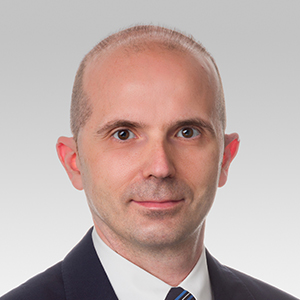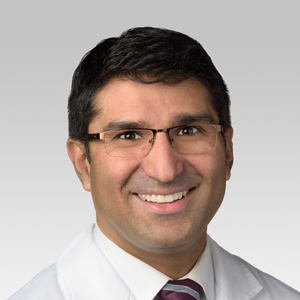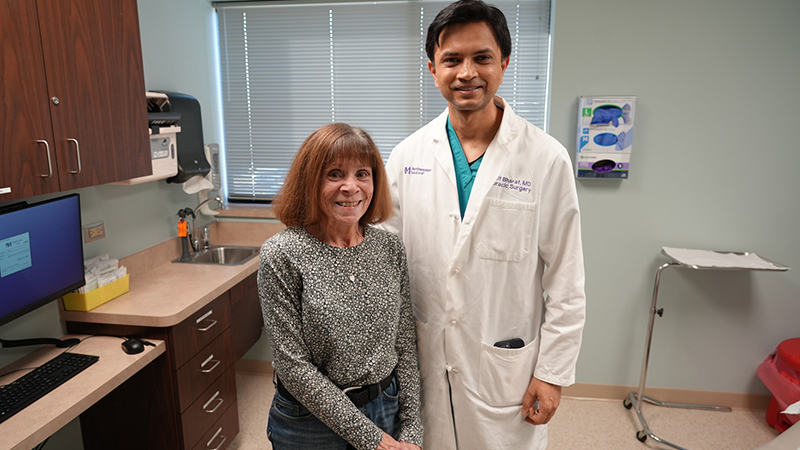Awake Kidney Transplantation: A Revolution in Renal Care
A Spinal Anesthesia Shot Allowed John Nicholas to Remain Awake During His Kidney Transplant
Updated October 2024
Kidney transplantation has long been a life-saving procedure for patients with end-stage renal disease. Now, a groundbreaking approach at Northwestern Medicine is transforming this critical surgery, offering patients a chance to remain awake throughout the procedure.
Surgeons at Northwestern Medicine performed a kidney transplant on 28-year-old John Nicholas of Chicago, who remained awake during the surgery without general anesthesia and was discharged home less than 24 hours after surgery. John says he felt no pain during surgery.
This was the first awake kidney transplant performed at Northwestern Medicine. Since then, five more have been performed, and that number continues to climb.
It is another tool in our toolbelt for the field of transplantation.— Satish N. Nadig, MD, PhD
Benefits of Awake Kidney Transformation
For this surgery, John’s care team gave him a spinal anesthesia shot instead of general anesthesia. This approach offers several advantages:
- Increased access to transplantation for patients at high risk for general anesthesia
- Decreased length of hospital stay to one day (compared to 2 to 5 days with general anesthesia)
- Reduced risks associated with general anesthesia
- Improved recovery experience, allowing patients to recover more comfortably at home
- Beneficial for patients with phobias related to general anesthesia
“Our hope is that awake kidney transplantation can decrease some of the risks of general anesthesia while also shortening a patient’s hospital stay,” says Satish N. Nadig, MD, PhD, a transplant surgeon and director of Northwestern Medicine Comprehensive Transplant Center. “Inside the operating room, it was an incredible experience being able to show a patient what their new kidney looked like before placing it inside the body.”
The Spinal Anesthesia Shot
Dr. Nadig performed the surgery, which took less than two hours, with Northwestern Medicine Transplant Surgeon Vinayak S. Rohan, MD, and Vicente A. Garcia Tomas, MD, an anesthesiologist and chief of Regional Anesthesiology and Acute Pain Medicine at Northwestern Medicine.
The anesthesia used is similar to what’s used during a cesarean section for childbirth. It involves injecting a local anesthetic into spinal fluid, numbing the lower half of the body while allowing the patient to remain conscious.
“Doing anesthesia for the awake kidney transplant was easier than a C-section,” says Dr. Garcia Tomas. “For John’s case, we placed a spinal anesthesia shot in the operating room with a little bit of sedation for comfort. It was incredibly simple and uneventful, but allowed John to be awake for the procedure, improving the patient experience.
Patient Experience
John didn’t have any risks or phobias to general anesthesia, but he was considered a great candidate for the procedure due to his age, limited risk factors and his eagerness to participate.
“It was a pretty cool experience to know what was happening in real time and be aware of the magnitude of what they were doing,” says John. “I had been given some sedation for my own comfort, but I was still aware of what they were doing. Especially when they called out my name and told me about certain milestones they had reached.”
Before the Transplant
At the age of 16, John began having kidney issues after being diagnosed with Crohn’s disease years prior. Routine lab work showed his kidney function had declined, and further testing determined inflammation in his kidneys was causing damage, but the root cause was never found.
John was able to avoid dialysis and managed his condition with medication. But after moving to Chicago in early 2022 and establishing care at Northwestern Medicine, his kidney function declined further. It became clear he would eventually need a kidney transplant.
John credits his Northwestern Medicine nephrologist, Cybele Ghossein, MD, for guiding him through the pre-transplant workup and optimizing the life of his natural kidneys as long as possible.
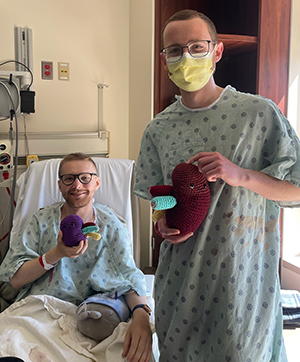
Pat Wise, who has been a close friend
since childhood.
The ‘Ride or Die’ Kidney Donor
There were some challenges in finding a donor for John. His mother originally planned to be his donor but was unable to donate following a breast cancer diagnosis. John then turned to the group of friends he’s known since elementary school while growing up in an Indianapolis suburb. His best friend, Pat Wise, remembers getting that text.
“I was in my kitchen cooking dinner, and John sent a message that read, ‘My doctor says it’s time for me to start looking for kidney donors.’ I stared at my phone and without hesitating, filled out the form that night,” says Pat. “John is a good friend. He needed a kidney, and I had an extra one. I had to at least explore the potential of being his donor.”
Pat was declared a match and traveled to Chicago where surgeons removed one of his kidneys and transplanted it into John.
“I have been blessed with a friend group that has stayed together from such a young age,” says John. “We always called ourselves ‘ride or die’ friends, and this example shows that we have each other’s backs. It meant the world to me. It’s truly been life-changing.”
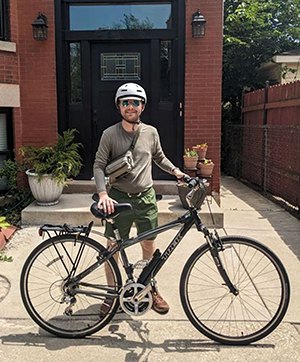
his salt intake, but he is now looking forward
to enjoying pizza and having more energy
to ride his bicycle around Chicago.
“When John agreed to be the first patient at Northwestern Medicine to undergo an awake kidney transplant and be discharged home the next day, he knew the benefits outweighed the risks, and because of him, he’s now moving the entire field of transplantation forward,” says Dr. Rohan. “He is an extremely compliant patient who was in tune with his body and willing to push the envelope. He had the utmost faith in us, and we had the utmost faith in him.”
The Future of Awake Transplantation
Since John’s transplant, Northwestern Medicine has established an AWAKE Program (Accelerated Surgery Without General Anesthesia in Kidney Transplantation) for more patients who could benefit from this type of procedure. “It really opens up a whole new door and is another tool in our toolbelt for the field of transplantation,” says Dr. Nadig.
Learn more about the kidney transplant process.



